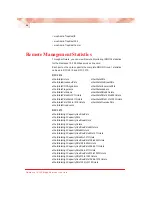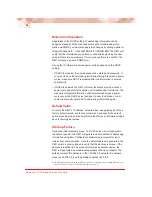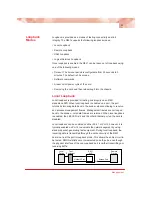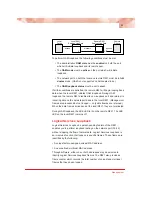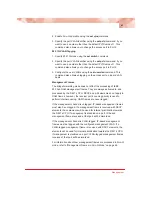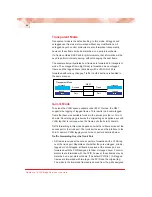
Radiance 10/100 Mbps Services Line Card
36
Traffic
Prioritization
The R821 supports Class of Service (CoS) with four priority queues (0
low, 3 high). CoS allows you to assign mission-critical data to a higher
priority, so they are processed before less critical traffic during times of
network congestion. The four CoS queues determine the priority for
transmitting data. Queues can be based on any of the following classifi-
cations:
•
priority bits (p-bits) in the VLAN header
•
DSCP/TOS (differentiated services code point / type of service) bits
in the header of IP frames
•
default port priority bits
Precedence
By default, both p-bits and DSCP classifications are disabled, and only
the port priority is used to determine the queue for each incoming frame.
The default port priority setting is not configurable; it is always enabled.
However, the other two classifications may be enabled/disabled indepen-
dently. When there is more than one classification enabled, the R821
allows you to set the precedence to determine which classification will be
used first. By default, the precedence from highest to lowest is as
follows:
1. p-bits
2. DSCP bits
3. port
This means that if the frame received is priority-tagged, the p-bits will be
used to select the queue for sending the message. If the frame received
is untagged and is an IP frame, then the DSCP bits will be used to select
the queue for sending the message. If the frame is untagged and is not
an IP frame, or if both DSCP and p-bits classification are disabled, then
the default port priority will be used to select the queue. The port priority
always has the lowest precedence.
The table below describes the settings required for the various
precedence sequences supported by the R821.
Priority Order
(1 high, 3 low)
DSCP setting p-bits setting Precedence selection
1. DSCP 2. p-bits 3. port
enabled
enabled
DSCP
1. p-bits 2. DSCP 3. port
enabled
enabled
p-bits (802.1p)



